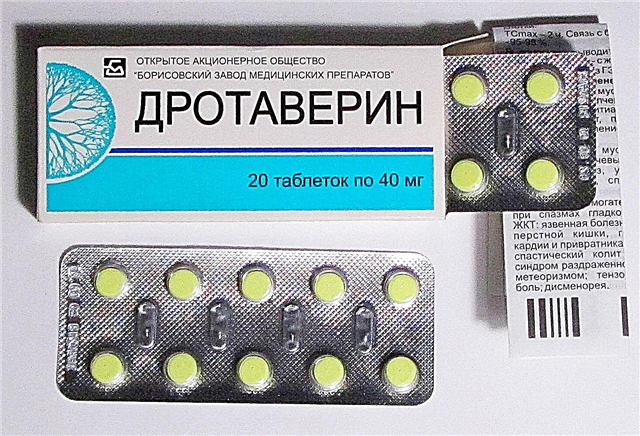
Nemozole is one of the popular antihelminthic agents and is often prescribed in suspension for children. However, this medication is also available in solid form. Is it possible to give such pills to a child and for what helminthic invasions are they prescribed? In what dosage is Nemozol used in tablets in childhood and how to take the medication correctly to get rid of worms?


Release form
Tableted Nemozol is presented in pharmacies in two options:
- Chewable tablets. They are distinguished by an elongated oval shape, an almost white color, a pleasant smell and a sweet taste. Such Nemozol is packed in blisters of 1 piece and sold in 1 tablet per pack.


- Coated tablets. They have a white shade and a convex round shape. This form of medication is available in two dosages. The lower dose pack contains 2 tablets, and the higher dose pack is sold in one tablet.
Composition
The action of Nemozole is provided by a substance called albendazole. This ingredient is available in 200 mg and 400 mg coated tablets and 400 mg in chewable tablets. Excipients of the drug are corn starch, gelatin, sodium lauryl sulfate, sodium starch glycolate, magnesium stearate and colloidal silicon dioxide, as well as povidone-30, propylparaben, talc and methylparaben.

Additionally, chewable tablets include mint and pineapple flavors, aspartame and citric acid, and the coated tablets contain propylene glycol, titanium dioxide and hydroxypropyl methylcellulose (it is from these substances that the shell is created).
Operating principle
Albendazole has the property of influencing the intestinal cells of helminths and disrupting the biochemical processes in the body of parasites, as a result of which the drug destroys the worms and some protozoa. The drug actively affects:
- roundworm;
- pork tapeworm larvae;
- pinworms;
- echikococcus and its larvae;
- toxocars;
- lamblia;
- whipworm;


- hookworms;
- the causative agent of strongyloidiasis;
- nonators;
- trichinella.

The drug is capable of destroying both one and several types of helminths at once. The absorption of tablets in the gastrointestinal tract is slow, but accelerated with simultaneous food intake. The bioavailability of the drug is estimated at 30%. Once in the bloodstream, albendazole is transported to the liver, where sulfoxide is formed. This metabolite also has anthelmintic activity.
After all metabolic transformations, the drug is excreted by the kidneys, but if the function of this organ is impaired, its excretion from the body does not deteriorate.
Indications
Nemozole tablets are used to treat:
- ascariasis;
- echinococcosis;
- neurocysticercosis;
- giardiasis;
- strongyloidosis;
- trichinosis;

- trichocephalosis;
- toxocariasis;
- enterobiasis;
- non-kotorosis;
- ankylostomiasis;
- mixed helminthic invasions.
At what age is it prescribed?
There are no age restrictions in the instructions for Nemozol, but in practice, the drug in suspension is not used in children under one year old, and tablets are prescribed for patients over 3 years old. However, a medicine can be prescribed in the first years of life if there is an indication for such treatment.
However, giving the drug to a child both under 3 years old and older should not be given without a doctor's prescription.
Contraindications
The medication is not given if the child has an intolerance to any of the components of the tablets. Also, Nemozol is not prescribed for retinal lesions. If the child has impaired hematopoiesis or liver pathologies, the use of the drug should be careful.

Side effects
When treating with Nemozole, the following negative symptoms may occur:
- nausea;
- rash on the skin;
- dizziness;
- vomiting;
- itchy skin;

- increased body temperature;
- stomach ache;
- headaches;
- increased blood pressure.
In some children, the drug adversely affects the functioning of the liver, which is noticeable by an increase in the activity of transaminases. In a general blood test with long-term treatment, leukopenia, thrombocytopenia, agranulocytosis can be detected.
Application and dosage
The tablets should be taken with meals with a small amount of water. Simultaneous treatment of all family members living in the same house with a child diagnosed with helminthic invasion is recommended. The dosage of the medicine is influenced by the type of helminthiasis and the weight of the small patient:
- If a child has one of the nematodes (analysis showed infection with roundworms, pinworms or other round helminths), Nemozol is taken once. Over the age of two years, you should drink or chew one tablet with a dosage of 400 mg, or swallow 2 tablets of 200 mg at once. For children under 2 years of age, the tablet preparation is usually not prescribed, but in some cases it is necessary to resort to such treatment and then the child is given 200 mg of albendazole as a single dose (1 tablet with a dosage of 200 mg or half a tablet for chewing).
- Echinococcosis treatment is usually prescribed in courses lasting 28 days, and for neurocysticercosis, the drug is used from 8 to 30 days. With such pathologies for children weighing up to 60 kg, the dose is calculated by weight, multiplying the number of kilograms by 15. This is how the daily amount of albendazole is obtained, which is then divided into two doses. If you weigh more than 60 kg, the medicine is taken twice a day, 400 mg. The maximum allowable dose of albendazole per day is 800 mg.


- If a child has giardiasis, then the dosage of the drug is determined by weight. Depending on the activity of the process, the doctor prescribes from 10 to 15 mg of the active ingredient per 1 kg of the patient's body weight. In such an amount, Nemozol is given once a day, and the duration of therapy is from 5 to 7 days.
- For the treatment of toxocariasis, the dose for children under 14 years of age should also be calculated by body weight. For 1 kilogram, 10 mg of albendazole is required, for example, a child weighing 40 kg should be given 400 mg of the drug per day. This amount is divided into two doses, and the duration of therapy is from 7 to 14 days. Over the age of 14, the medication is taken twice a day, 1 chewable tablet or 1 coated tablet with a higher dosage (400 mg).
Overdose
Exceeding the dose may cause nausea, drowsiness, dizziness, vomiting, and other symptoms in a child. To eliminate them, the stomach is washed and some kind of sorbent is given. If necessary, consult a doctor for symptomatic treatment.
Interaction with other drugs
If a child has neurocysticercosis, Nemozol is used in combination with glucocorticoids and anticonvulsants. The simultaneous use of tablets and dexamethasone or cimetidine increases the content of the active metabolite of the drug in the blood, which enhances its effect.


Terms of sale and storage
Purchasing Nemozole tablets at a pharmacy requires a prescription from a doctor. On average, the price of one chewable tablet is 170-190 rubles, and for one coated tablet with a dosage of 400 mg, you need to pay from 160 to 210 rubles. A dry place hidden from children is suitable for storing medicine at home, where the temperature will not be higher than +25 degrees.
The shelf life of the solid form of the drug is 3 years. If it has expired, it is prohibited to give medication to children.


Reviews
In most cases, they respond positively to the use of Nemozol for helminthiasis in children. Parents confirm that the drug is highly effective and fights most worms. According to mothers, children tolerate Nemozole mostly well, and side effects from pills are very rare. However, the solid form is often called inconvenient for children, so it is replaced with a suspension.

Analogs
Other drugs with a similar therapeutic effect are suitable to replace Nemozole. For example, a child can be given Sanoxal chewable tablets, which also contain albendazole at a dose of 400 mg per tablet. One pack of Sanoxal includes 1 tablet, and its price is about the same as that of Nemozol.
In addition, children with helminthiasis can be prescribed:
- Pirantel. This medication in suspension is prescribed from the age of six months. It is also presented as tablets containing 250 mg of pyrantel.
- Dekaris. This medicine is produced in tablets and contains levamisole. It can be given at a dosage of 50 mg from the age of 3.


- Vermox. These mebendazole tablets are prescribed for children over 2 years of age.
- Helmintox. The action of such a suspension is provided by pyrantel. The medication is prescribed from 6 months. It is also available in tablet form, recommended for children over 6 years of age.
- Wormin. Such tablets include mebendazole and are used from the age of two.
Any of these drugs is used for infection with worms and can be prescribed for prophylaxis to family members, however, you should not choose an analogue on your own in order to replace the nemozole prescribed by a doctor. If for any reason it is not possible to give the child Nemozol, it is recommended to consult a doctor to choose another anthelmintic agent.
Doctor Komarovsky will advise how you can detect worms with a sufficient degree of probability, and tell you whether it is necessary and possible to carry out effective prevention of helminthiasis:



